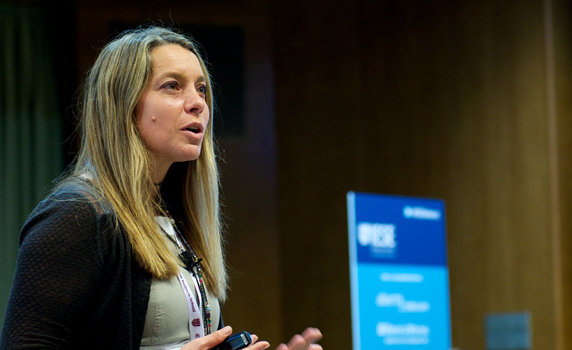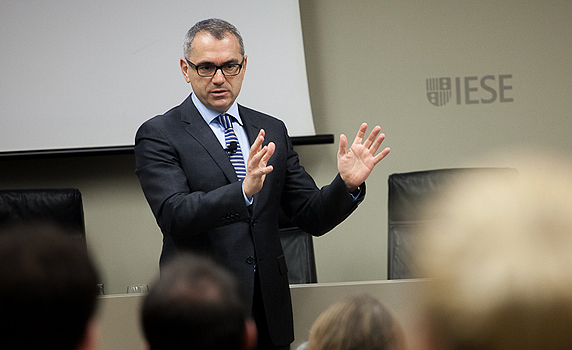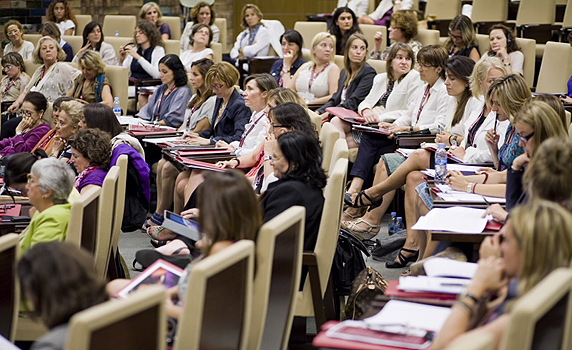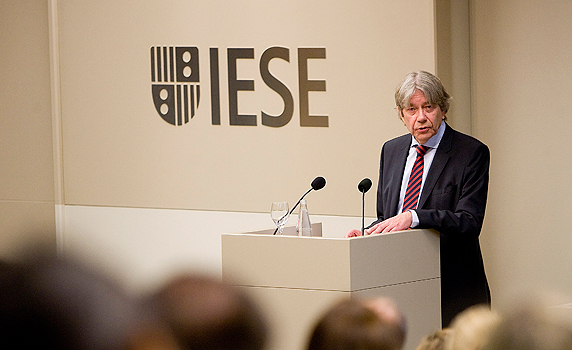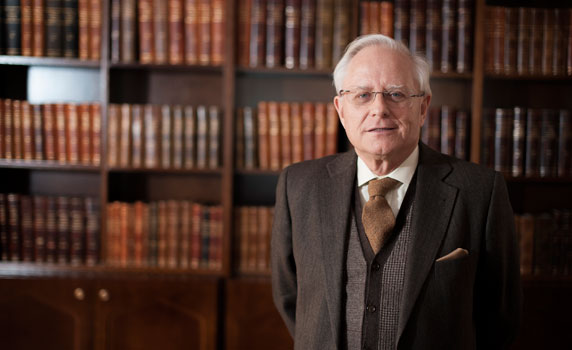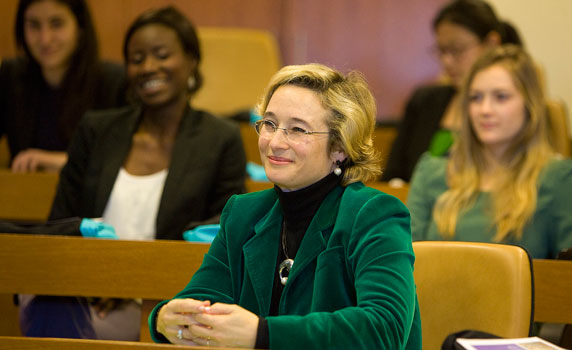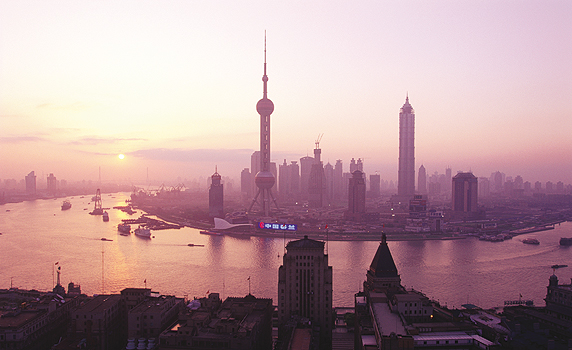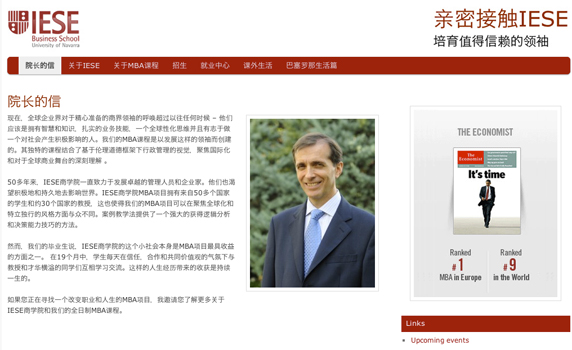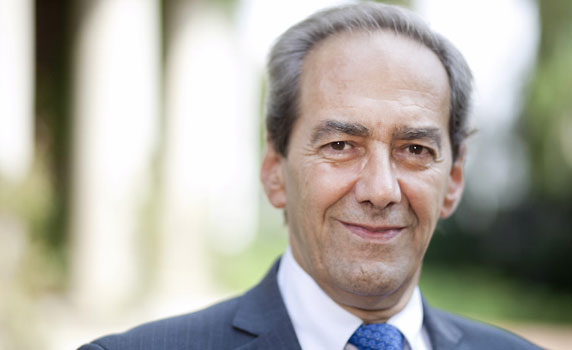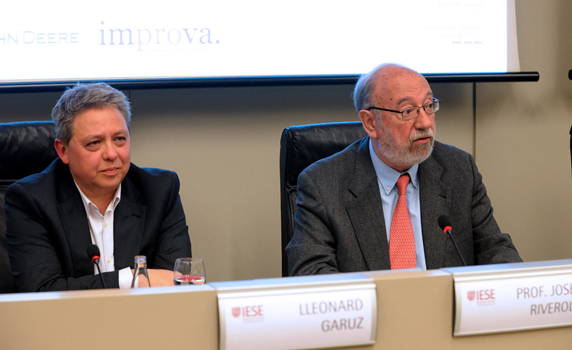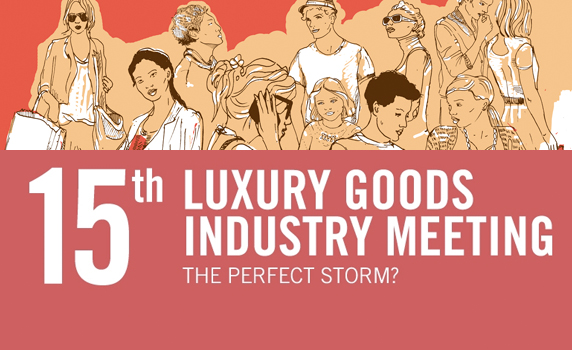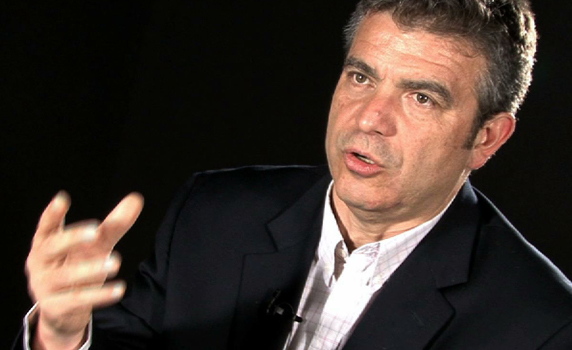![]()
The 15th Annual Luxury Goods Industry Meeting, which was held on IESE’s Barcelona campus on March 14-15, took as its theme "The Perfect Storm." After an introduction by professors Fabrizio Ferraro and Pedro Nueno, the first session was led by Carlos Falcó, the Marqués de Griñon, who is executive chairman of Círculo Fortuny, a not for profit association established to promote Spanish cultural and prestigious products and to improve the image of Spain as a luxury brand. Its 52 members cover a range of sectors including gastronomy, jewelry, cosmetics and fashion.
Culture and creativity are key drivers for creating jobs in the EU, Falcó said. Furthermore, Europe dominates the luxury brands market with a 70 percent share of the market. The sector is forecast to grow 7-9 percent per year, he said.
Falcó was followed by Luca Solca, managing director luxury goods at Exane BNP Paribas, who said that the idea of there being a perfect storm for the sector was only true from the point of view of the European market. The biggest threat comes from the anti-corruption drive in China which may affect the "gifting" culture. China accounts for 26 percent of the €55 billion world luxury market. Wealthy Chinese spend more on personal luxury goods than their Western peers, Solca said. He added that rising income inequality and social envy is on the rise in the West and that this may affect sales, but globally the outlook for growth is positive.
The next session, "Old Wine in New Bottles? The Art and Science of Luxury Goods Brands Revival," was moderated by the journalist Hannah Elliott, who writes on luxury for Forbes magazine. Arnaud de Lummen, CEO of Luvanis, looked at 10 brands that he called "sleeping beauties," brands that had a great history but had become "dormant." One example he gave was Balenciaga, which was established San Sebastián in 1919 and moved to Paris in 1936 but closed in 1968. It was successfully revived in 1986 and purchased by the Gucci Group in 2001 and in 2012 had a turnover of €300 million. On the other hand, the shoemaker Herbert Levine, whose shoes were worn by Marilyn Monroe and Jackie Kennedy, has been dormant since 1975. Its revival is imminent.
Pierre Mallevays, founder and managing partner Savigny Partners, said that every luxury brand is a mixture of heritage and creativity. Part of reviving the brand lies in associating it with its heritage but this is not enough if you don’t get the creativity and financing right, he said.
The next session was about capturing the jet set market and was titled "Consumers Without Frontiers" and was moderated by Pedro Nueno.
José María Palencia, CEO of the World Duty Free Group, said people spend €750 billion on what could be called lifestyle products and 40 percent of this is spent by people on the move. Travel and tourism is the world’s fourth biggest industry and travel is becoming cheaper. Airports are a more important luxury outlet in Asia than in Europe, Palencia said. There is a risk that some brands are becoming too dependent on the Chinese market with some selling more than 50 percent of their products there.
The next speaker was Eduardo Rivero, founding partner in the consulting company Ascana which helps French and Spanish fashion brands to find suitable real estate in other countries. All luxury brands are based on family firms and like families are all different and have grown in different ways, he said. "We have focused on Europe because there are a lot of undeveloped markets in places where there is a lot of money," he said.
Entrepreneurship and brands
In a separate session, moderated by Prof. Ferraro, Oliver Ike spoke about the challenges of launching a new company in the luxury sector. "One of the problems is distribution: convincing salespeople that your product is the same or better than another," he said. Another frequent obstacle is supply, since items are manufactured in small quantities.
His brand of Swiss watches A. Manzoni & Fils doesn’t seek to compete with major brands, which invest a lot more money in production and advertising. Instead, the firm focuses on quality craftsmanship. They have also sought to bring a touch of Lugano to their products, which makes them difficult to copy.
Currently, the company has four business units: wristwatches, table clocks, movement and renovation of the original A. Mazoni & Fils factory in Lugano. He believes that the brand will generate profits in three years.
One of the company’s missteps was to move too quickly in some markets, he said. "There are markets that generate trends: if you are not in these markets, it’s difficult to move into others." In the case of watches in Europe, Italy is the "trending" market, followed by France. He cautioned against entering too many markets and instead "enter a few and enter them well."
Online strategy
Watches that cost around 25,000 euros are not sold online since customers want to touch and see them. The online strategy, therefore, is to transform potential clients into buyers, he said. Regarding copyright and copying, it has become difficult to maintain an original design. You have to take more risks and create products that are difficult to copy.
Shelley Tichborne – who founded MOU, a shoe and specialized boot company – concurred that avoiding replication is a key problem in the fashion industry. In 2007, she discovered that one of her boot designs was very popular in Japan because she was receiving emails from Japanese girls congratulating her. Yet she did not distribute in Japan. Later she found out the her brand had been registered in Japan and China and copies of her products were being sold in those markets. She decided to buy rights to these "pseudo-brands." "In my industry, it is practically impossible to keep your product from being copied."
In another case, she found out that one of her suppliers had taken one of her boot designs, registered a new company and was the product during New Zealand’s fashion week. A legal conflict ensued, with MOU finding itself forced to work with the company that had copied the design, Tichborne said. Her company controls online sales carefully, making sure that retailers do not sell online without her permission through a signed contract.
The session with Tichborne was followed by the Investment Forum for luxury brands, moderated by Victoria Velázquez, Start up Business Coach. The event was organized together with the Private Investor Network and IESE’s Entrepreneurship and Innovation Center, providing an exceptional opportunity for entrepreneurs to present their projects to private investors and venture capital funds.
Emerging markets
On Friday, the meeting began with a panel discussion, moderated by Paulo Feferbaum of Clarity Partners Europe, focused on internationalization through emerging markets and factors that affect doing business in Brazil and India.
Rosa Tous, director of corporate relations for Tous, described how her company has expanded globally from its home base in Manresa, Spain to more than 417 stores around the world. The jewelry and accessories company currently boasts 55 stores in Mexico, its second largest market after Spain. Forty new stores will open their doors in different markets in 2013. Social media plays a central role in the how the company engages with customers, said Tous, since "it allows you to create links quickly in any part of the world."
Sergio Costa, managing director of Brazil Business Consulting, explained how complex and constantly-changing tax laws in Brazil continue to hamper doing business in the country. And while the Brazilian market is massive, luxury brand companies should keep in mind when setting strategy that most wealth is concentrated in the southern region of the country. Meanwhile, Rahul Prasad, managing director of the Asia-Pacific and Middle East for Pike Preston Partners, described the intricacies of India’s diverse marketplace. Over the last two years, there has been an important influx of flagship luxury brand stores in India, although there are signs that the luxury sector is slowing now. He explained that tastes differ markedly in India, with consumers in the south preferring a more restrained aesthetic, and those in the north engaging in more "conspicuous spending." A population of 1.2 billion consumers and a long tradition of purchasing luxury products make India an attractive market for many brands, he said.
A session with Martí Torres, director of marketing for Barcelona’s opera house, the Gran Teatre del Liceo, followed. He described the important synergies that can be developed between luxury brands and cultural entities such as the opera house. Benefits for companies include brand positioning, an increase in customer loyalty and access to key markets.
In the final session of the meeting, Micaela Le Divelec, vice president and CFO of Gucci shared the story behind the iconic fashion firm and insights on what has led to its success. Throughout its 90-year history, the Italian company has continued to focus on high-quality craftsmanship and strong links to art. With a turnover of 3.6 billion euros in 2012, the company has 429 directly operated stores distributed fairly evenly across the world’s key markets. Japan remains one of the firm’s biggest markets, where 11 percent of Gucci stores are located. As the company has grown, it has kept production in Italy, while maintaining "a deep respect for the culture of local markets," she said.
![]()
